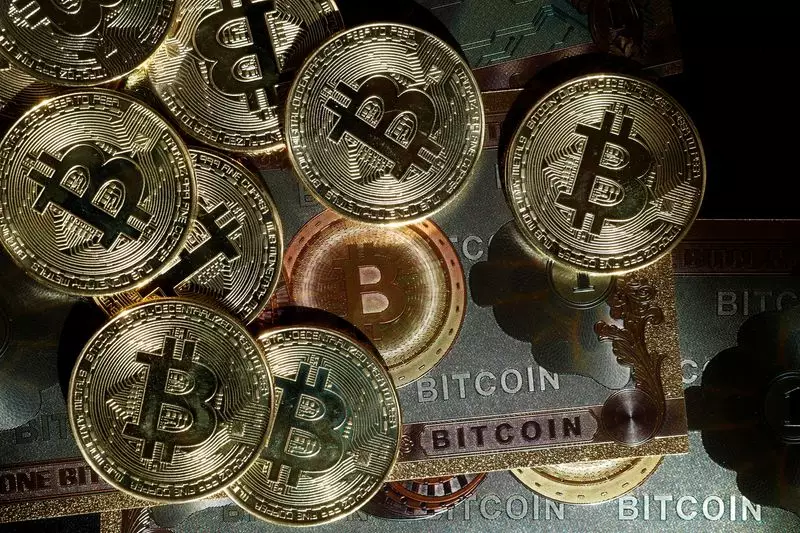Recent developments in the global financial markets have highlighted Bitcoin’s extraordinary resilience as it pushes to reach one-month highs. After a significant interest rate cut by the Federal Reserve, Bitcoin has registered a noticeable uptick, trading at approximately $63,200 with a 0.8% increase. This performance contrasts markedly with traditional fiat currencies, particularly the Japanese yen, which has stagnated due to market inactivity caused by a public holiday in Japan. While the yen has experienced a modest gain of 1.4% throughout September, the current holiday in Japan creates a backdrop of reduced trading volume and market volatility.
One of the pivotal factors influencing Bitcoin’s movement is the recent shift in U.S. monetary policy. Following the Federal Reserve’s decision to cut interest rates significantly, market sentiment has enjoyed a temporary uplift, with investors showing greater confidence in riskier assets, including cryptocurrencies. Bitcoin’s performance indicates not only investor appetite for risk but also the cryptocurrency’s growing status as a digital asset that could be perceived as a hedge during uncertain economic times.
The broader implications of the Federal Reserve’s rate cut have reverberated across various currency markets, particularly the relationship between the U.S. dollar and the Japanese yen. The dollar strengthened against the yen last week, peaking at 144.50 yen, before settling around 144.08 on Monday morning. Despite the Bank of Japan’s (BOJ) decision to leave interest rates unchanged last week, the continued speculation regarding future monetary policy adjustments looms large over the yen’s performance.
The BOJ’s cautious stance, articulated during its recent meetings, reflects a wait-and-see approach that could hinder Japan’s economic recovery. Analysts have noted that the expectations surrounding further rate cuts in the U.S. are likely to foster continued support for the dollar while challenging the yen’s strength, particularly with the political landscape in Japan on the verge of a shift.
Furthermore, Goldman Sachs’ analysis post-Fed meeting suggests that the rate cuts may have calmed recession fears, potentially adding short-term bullish sentiment for the U.S. dollar. Fed futures indicate a projected timeline of 75 basis points in rate cuts by year-end, and nearly 200 basis points by 2025, which contributes to the steepening Treasury yield curve. Market analysts anticipate this trajectory could well lead to adjustments in how global currencies will respond to ongoing fiscal and monetary policy frameworks.
As if the monetary environment weren’t complex enough, the upcoming selection of a new prime minister in Japan complicates the outlook for both the yen and the BOJ. The frontrunners to succeed outgoing Prime Minister Fumio Kishida present differing economic philosophies, particularly concerning monetary policy. Economists are closely watching candidates such as Sanae Takaichi, who has positioned herself as a reflationist and could challenge the BOJ’s conservative approach, potentially increasing pressure on the yen if elected.
Industry experts from Barclays have flagged this situation as a source of uncertainty for the yen, indicating that Takaichi’s victory could derail the Bank of Japan’s strategy for policy normalization and stir concerns about fiscal discipline leading into a likely snap election. Should her policies lead to a reshuffling or radical changes in monetary policy, this would directly impact Japan’s bond market and currency valuation.
The scenario extends beyond Japan as the global economic narrative incorporates responses from other key players, like the U.K.’s economic indicators and the Bank of England’s recent policy decisions. The BOE’s decision to maintain its current interest rates is being closely monitored, particularly in light of recent robust retail sales data, providing a mixed picture of the British economy. The pound experienced a slight decrease against the dollar, trading at approximately $1.3310, but remains buoyed by underlying strength in consumer spending, which may influence future monetary policy moves.
As Bitcoin continues to stand out in the financial landscape, it does so amid a backdrop of complex global economic conditions and impending political changes. Investors will need to navigate these dynamics cautiously, aware that shifts in policy and market sentiment can lead to rapid adjustments in asset values. With all eyes on central banks and political developments, the current period presents both opportunities and challenges for investors in cryptocurrencies and traditional assets alike.


Leave a Reply